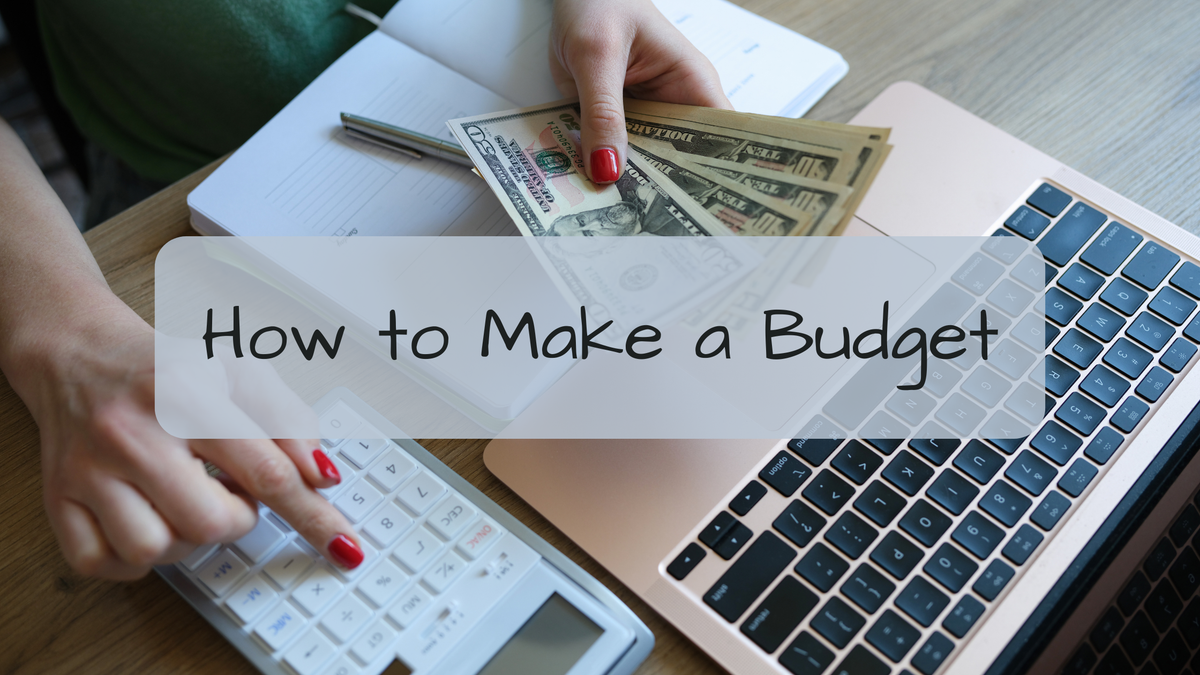How to Make a Budget (Step-by-Step for Real Life)
Budgeting doesn’t have to feel overwhelming or restrictive. Learn how to create a simple, flexible plan that fits your real life—even if you hate math or feel behind. With the right tools and support, you can finally feel in control of your money.

If the word “budget” gives you flashbacks to math class or makes you feel like a financial failure—stop right there. You are not behind. You’re just building the money skills no one ever taught us.
And if you’ve ever sat down to make a budget and ended up overwhelmed, confused, or rage-eating pretzels? Been there. That’s why this post is going to walk you through it step by step—no fluff, no judgment, and no spreadsheets required.
You don’t need to be great at math or have a perfectly organized life to create a budget that actually works. You just need a system that makes sense for you.
Why Most Budgets Fail (and How to Fix It)
Let’s be real—most people who “fail” at budgeting didn’t actually fail.
They just tried to follow a budget that wasn’t built for their real life.
Maybe it was too strict.
Maybe it didn’t account for mental health days or car repairs.
Maybe it was built off of fantasy numbers instead of actual spending.
The fix? Start simple. Build flexibility into your plan. And above all—make it realistic.
Because a budget isn’t a punishment. It’s a plan for peace.

Step 1: Know Your Real Monthly Income
Start with what’s actually coming in—not what you wish was coming in.
➡️ List all income sources after taxes:
- Paychecks
- Side hustles
- Child support
- Government benefits
- Any recurring money that lands in your account
➡️ Add it up: This is your total monthly income.
🔁 If your income is inconsistent, take the average of the last 3–6 months and use a conservative number. It’s better to underestimate than overplan.
Step 2: List Your Fixed Monthly Expenses
These are the same every month, no matter what.
- Rent or mortgage
- Utilities
- Insurance (health, car, life)
- Loan payments
- Subscriptions
- Phone bill
➡️ Add them up: This is your total fixed expenses.
📎 Pro tip: Use the bill tracker in my FREE Financial Planner Bundle to make this painless. It helps you avoid late fees and forgotten due dates, especially when life gets busy.
Step 3: List Your Variable Expenses
These change month to month, but you know they’re coming.
- Groceries
- Gas
- Eating out
- Toiletries
- Pet care
- Fun money
- Coffee, Target runs, etc.
➡️ Estimate an average based on past spending. Look at your last 1–2 months of bank statements if needed.
🎯 Be honest here—your budget only works if it reflects your actual habits, not your “perfect world” intentions.
Step 4: Subtract Expenses from Income
Now subtract your fixed + variable expenses from your total income.
- If you have money left over: 🎉 High five! That’s where savings, debt payoff, or a cushion can come from.
- If you’re in the red: That’s okay. This is your opportunity to rework and adjust.
This is what budgeting is for—clarity, not shame.
You can’t change what you can’t see. But once you see it clearly, you’re in control again.
Step 5: Cut or Reduce Where You Can
Look at your list and ask:
- What can I pause (subscriptions, entertainment)?
- What can I downgrade (switch phone plans, car insurance)?
- What can I reduce temporarily (eating out, online shopping)?
Even trimming $50 to $100 a month can make a big impact over time.
The goal isn’t to deprive yourself—it’s to make room for breathing again.

Step 6: Track It Weekly (Not Just Monthly)
Budgeting once a month is great in theory—but weekly check-ins are where the magic happens.
🗓 Set a weekly money date with yourself:
- Look at what you’ve spent
- See how it compares to what you planned
- Adjust where needed
- Celebrate wins (like staying on track or resisting impulse buys!)
📘 If you’re visual like me, the budget planner + financial tracker in the Financial Planner Bundle makes this so much easier.
Step 7: Make Room for Saving—Even If It’s $5
Always add a line for savings. Even if it’s small.
You’re not saving for the amount. You’re saving for the habit.
That $5 a week into an emergency fund or vacation jar? It matters. It builds consistency. And that consistency builds confidence.
This ties in with:
- Money Rule #2: Start saving early
- Money Rule #3: Build an emergency fund
👉 Download the 7 Money Rules Free Guide if you haven’t already.
Case Study: Meet “Nicole”
Nicole makes $2,400/month after taxes. Her rent is $1,200, her car payment is $300, and she’s got $400 in other bills.
She was spending the rest without a plan—until one overdraft too many made her sit down and start budgeting.
Now, she uses this setup:
- Fixed expenses: $1,900
- Groceries + gas: $300
- Fun + buffer: $100
- Savings: $50
- Weekly check-ins using the printable tracker
It’s not flashy. It’s not perfect. But it works.
She’s stopped guessing, stopped overdrafting, and started feeling more in control.
Budgeting Hacks That Make Life Easier
Here are a few ideas to help you stretch your budget and feel more confident:
- Cash stuffing: Great for groceries, gas, or fun money
- Dedicated savings jars: Create mini savings jars for holidays, vet visits, or school fees
- “No-spend” weeks: Challenge yourself one week per month to spend nothing outside of essentials
- Round-up apps: Save your spare change without thinking about it
- Write it down: There’s power in seeing your money on paper—it feels real, and it sticks
Budgeting isn’t one-size-fits-all. Try what feels doable. Keep what works. Toss the rest.
Want to Understand Why Budgeting Alone Isn't Enough?
Budgeting is a powerful start—but without financial literacy, it’s easy to feel stuck or overwhelmed.
This free ebook breaks down why so many people struggle with money (and why it’s not your fault), and how learning the basics can help you make smarter, more confident financial choices—no shame, no jargon.
👉 How Money Works – Free Ebook Overview
And if you want someone to walk through your numbers with you (judgment-free), I’ve got your back.
👉 Book a free intro call with me and my gal Joy
We’ll look at what’s working, what’s not, and what next step makes the most sense for you.
From Someone Just a Step Ahead
I used to think budgeting meant giving things up. Now I know—it’s the exact opposite.
Budgeting means giving yourself something:
Clarity. Control. Confidence.
You don’t need to be perfect. You just need a plan that meets you where you are.
👉 Download the 7 Money Rules Free Guide
👉 Get the FREE Financial Planner Bundle
👉 Read the How Money Works – Free Ebook
👉 Book Your Free Intro Strategy Call
You’ve got this—and I’ve got you.
Affiliate Disclaimer
This blog may contain affiliate links, which means I may earn a small commission if you click on a link and make a purchase—at no extra cost to you. As an affiliate, I only recommend products that I personally use, trust, and believe will add value to my readers. Your support helps keep this content free and allows me to continue sharing helpful tips and resources.
I am not a medical professional, and the information provided on this blog is for educational and informational purposes only. Always consult with a qualified healthcare provider before making any changes to your skincare or wellness routine.